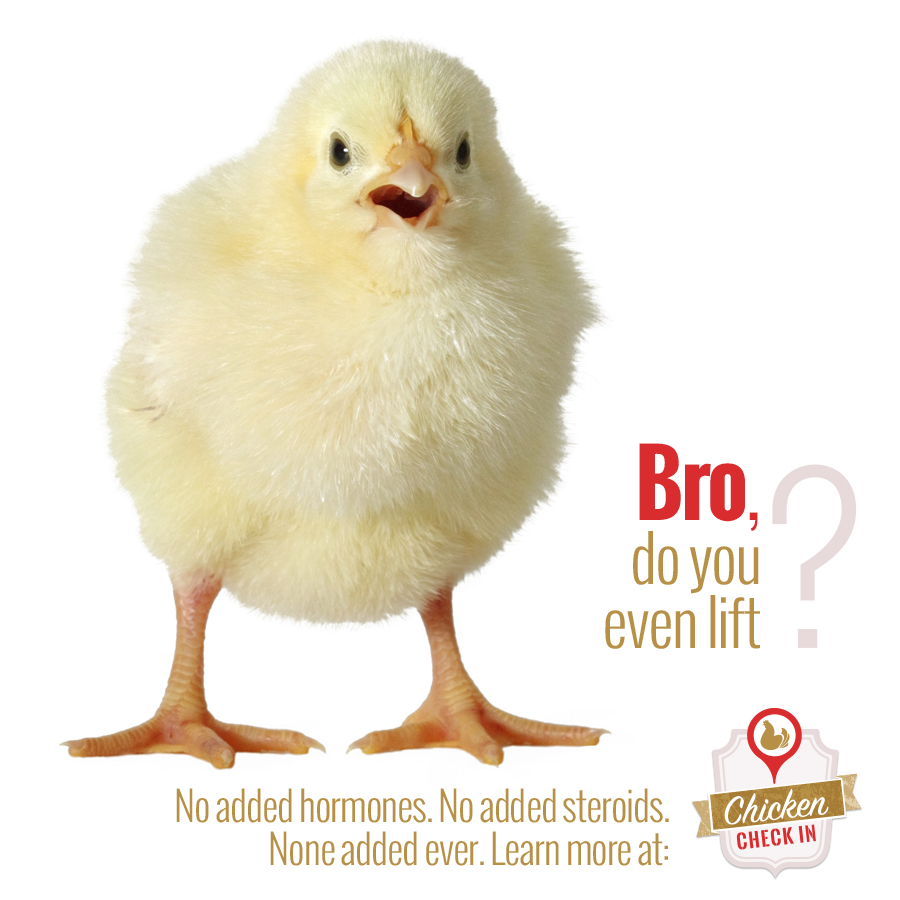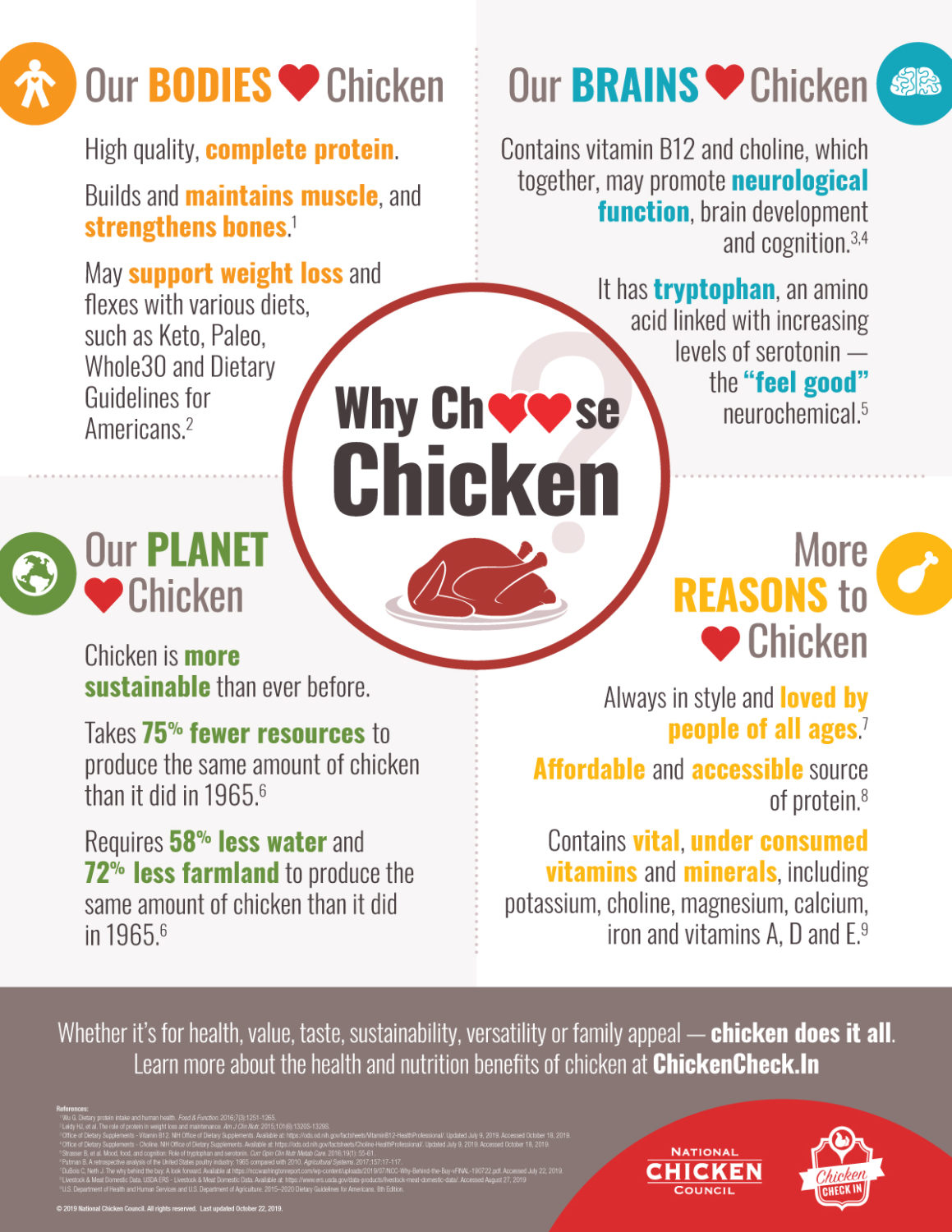Over the years, questions about chicken have evolved from “what came first…” to “chickens are HOW big?” When the questions start…so do the myths. For National Chicken Month, NCC this week posted a new blog on Chicken Check In to debunk some of the biggest chicken myths out there today.
Myth #1: Chicken production is not sustainable.
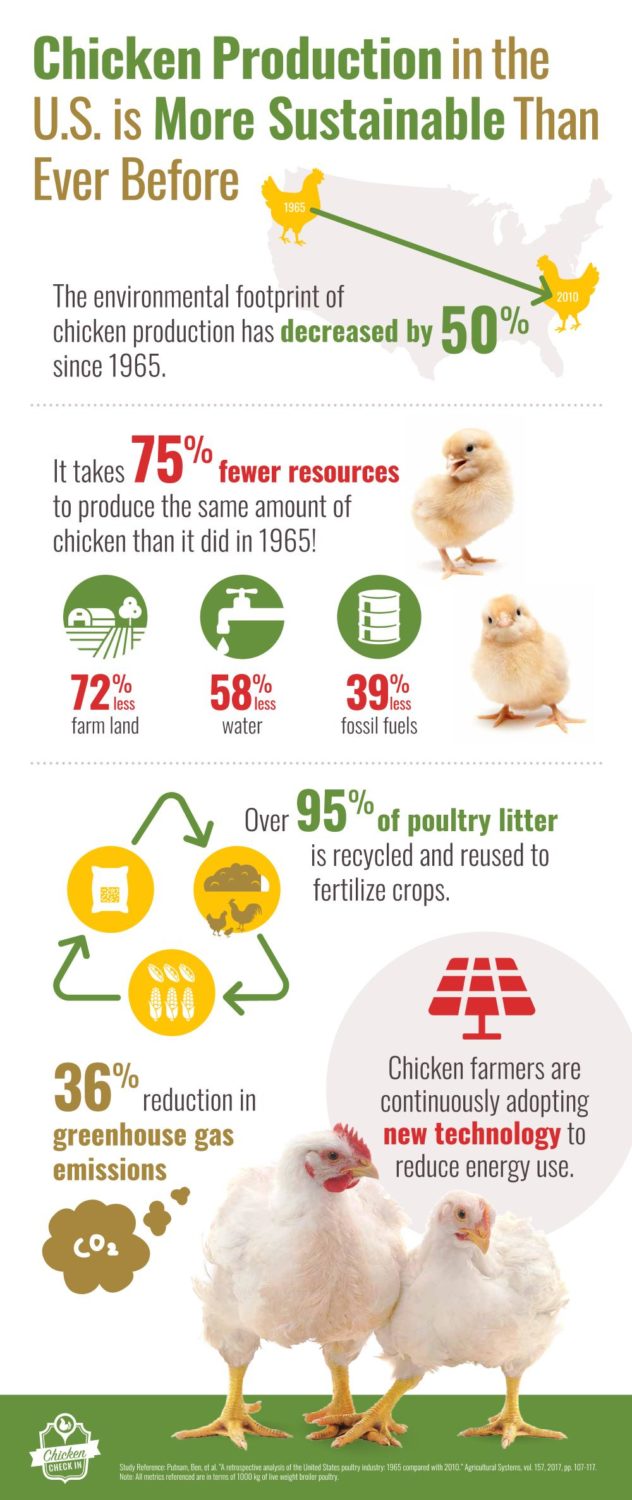
Chicken production in the U.S. is more sustainable than ever before. In fact, the environmental impact of chicken production has decreased by 50% since 1965.
These improvements in environmental impact have gone hand-in-hand with improving bird health and welfare. All current measurable data – livability, disease, condemnation, digestive and leg health – reflect that the national broiler flock is healthier than it has ever been.
That’s great, but what about the health of the planet – greenhouse gases?
The production of all food – whether it’s meat, seafood or fruits and vegetables – results in greenhouse gas (GHG) emissions. According to the Environmental Protection Agency (EPA), producing chicken, turkey and eggs only accounts for 0.08% of the total U.S. GHG emissions.
But we can always do better – and we are! The chicken industry remains committed to reducing the environmental impact resulting from the use of natural resources and byproducts of poultry production that contribute to climate change. From 1965 to 2010, the environmental impact of producing 1000 kg (2,204.62 lbs.) of liveweight poultry has been cut in half. In fact, 75% fewer resources are required to produce the same amount of chicken than as in 1965. These improvements have been enabled by technological advancement and improved animal husbandry practices.
Myth #2: Chickens are mistreated.
The health of the chicken you eat is the livelihood of the farmer who raises it. Not only is treating chickens with the respect they deserve the right thing to do, it also dictates the success the farmer is working so hard to achieve – the American dream!
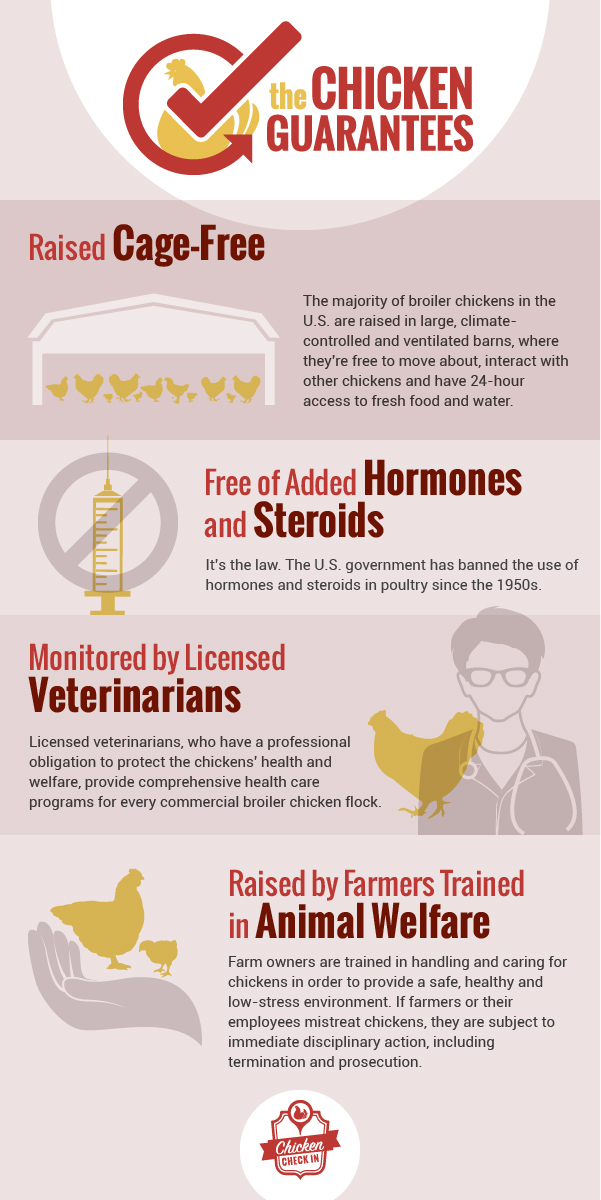
Broiler chickens (chickens raised for meat) are always raised by farmers trained in animal welfare. We also worked hard to develop the Chicken Guarantees, a set of welfare standards that serve as a benchmark for the broiler chicken (chicken raised for meat) industry.
Yeah, but who’s really checking?
There are a lot of eyes on those that raise your chickens. Specially trained company personnel visit the farms regularly, often once a week, to monitor the birds for signs of illness or mishandling. In addition to these visits, companies frequently send welfare specific auditors to monitor the farms and score them based on that farm’s particular welfare standards.
The company’s customers, who buy the poultry meat, such as a grocery store or restaurant, typically hire PAACO certified outside auditors, known as Third Party Auditors, to perform welfare audits to ensure that the standards of the customer are being met.
Myth #3: Chickens are pumped with hormones.
What’s true: chickens today are in fact bigger! What’s not true: It’s because they’re pumped with hormones.
You might be surprised to learn that there are no artificial or added hormones used in the production of U.S. chicken. In fact, the use of such hormones is expressly forbidden by law by the U.S. Food & Drug Administration (FDA). Note: Labels that read: “Raised without hormones” must also include a statement saying that no hormones are used in the production of any poultry raised in the United States.
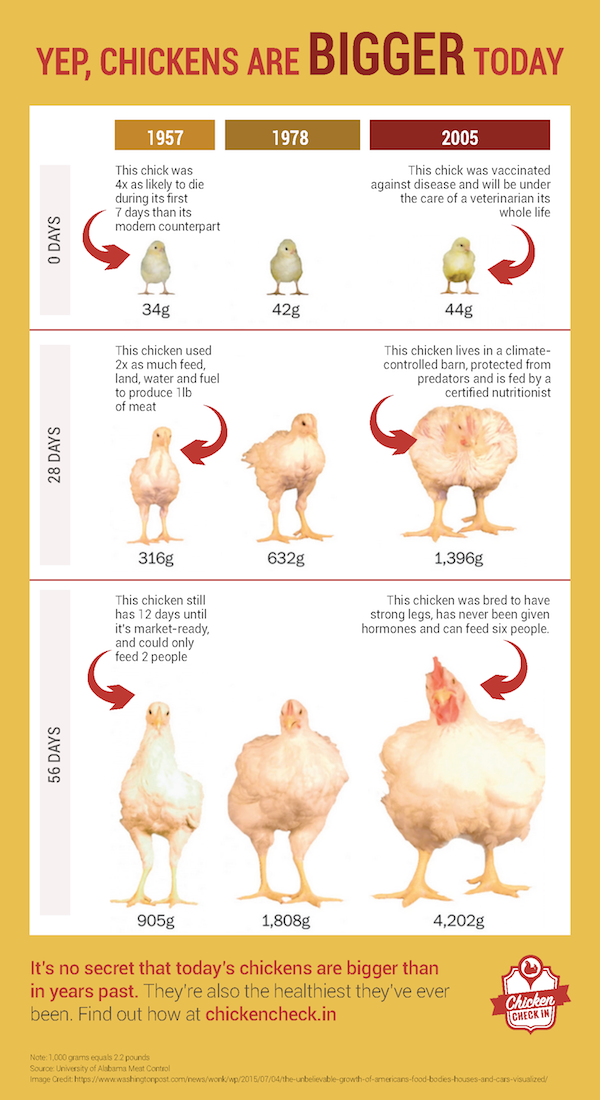
So, how’d they get so big?
Much like dogs – chickens come in many sizes too. Today’s birds are given optimal nutrition, veterinary care and better living conditions, but perhaps most importantly the chicken industry has modernized and improved the science of traditional chicken breeding.
For centuries farmers and ranchers have improved the genetic lines of their herds and flocks by selectively mating the healthiest and strongest animals with each other to produce a stronger line of offspring. This traditional breeding process is at the heart of animal husbandry, and it allows for small improvements in size, strength, growth rates and health in each generation of the herds and flocks.
Myth #4: Chickens are raised in cages.
You might see “cage free” labels on packaged chicken meat that you purchase at the store. However, no chicken you buy is raised in a cage. The majority of chickens raised for meat in the U.S. live in large, open structures called houses where they are free to walk around. Others, including free-range chickens, have varying access to the outdoors, based on farmer preference.
I’ve seen pictures, though…they’re crammed together!
By nature, as the old saying goes, birds of a feather tend to flock together – a behavior that can sometimes give the impression that the birds are crowded, when in fact they’re just following their natural instincts.
If chickens did not have adequate space to move around, then they would not be able to eat and drink – and ultimately not go to market. Not only is adequate space for each bird a basic welfare requirement, but it is also in the farmers’ best business interests for their birds to have space to grow and go to market – so that they can earn their living.
Myth #5: Plant-based ‘meats’ are healthier than chicken.
Here’s the truth of the matter: There’s nothing to suggest that plant-based meats are healthier for you or better for the environment than chicken. Many plant-based meats can actually have a lot of sodium, a long list of unfamiliar ingredients and saturated fats from coconut oil or cocoa butter.
But chicken can’t be healthier than something plant-based, can it?
There’s just one ingredient in chicken…chicken! So, why choose chicken for health? It’s an excellent low-calorie and low-fat source of high-quality protein that provides important nutrients throughout our lives – from pregnancy through our later years.
The plant-based trend should not distract from the bigger picture that eating a balanced and healthy diet involves many plant foods, like vegetables, fruits, whole grains, legumes, and nuts, together with lean animal-based meats, such as chicken.
